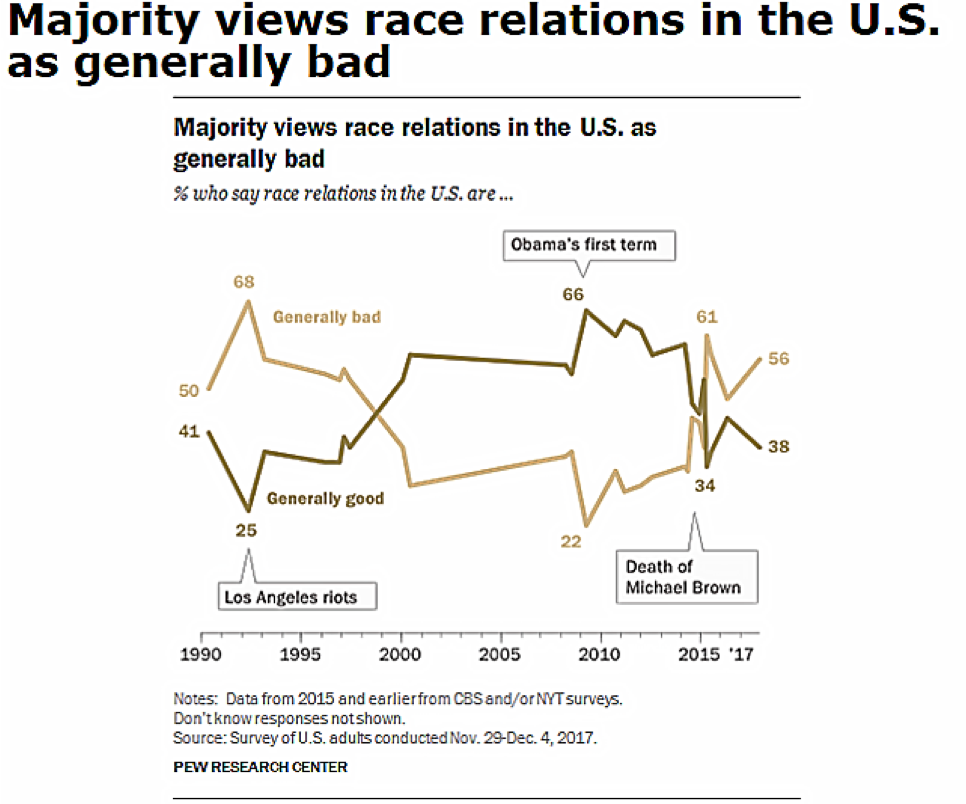Talent 2025’s Workforce Diversity, Equity, and Inclusion (WDE&I) Working Group held a workshop on the Evidence Based Selection Process (EBSP) at Mercy Health Saint Mary’s on May 31. Local West Michigan Employers and HR Leaders gathered to learn about this hiring process, why WDE&I in hiring matters, and how they might get started implementing a similar program.
Improving WDE&I for Mercy and the Community
Mercy Health Saint Mary’s President Bill Manns first made the case for improving diversity in hiring by sharing background information about race both nationally and locally.
Americans’ view of race relations reached an all-time high near Obama’s election in 2008 but has decreased dramatically since. Manns explained that following the death of Michael Brown in 2014, Americans felt that race relations were as bad as during the LA Riots in 1992.

While West Michigan is doing well economically overall, headlines have reported inequalities. Grand Rapids has been named the top city to raise a family and one of the fastest growing economies, but it has also been listed as the second-worst city for African Americans economically in the nation.
Manns explained that in addition to the business case for advancing WDE&I, these reasons lead Mercy Health to adopt new practices to align with their mission, core values, and commitment to improving the community.
What is EBSP’s Impact?
Rather than explicitly hiring candidates based on their race or ethnicity, EBSP is a disciplined process that levels the playing field and ensures that the best people are hired. The process removes human bias and leads to more people of color being hired consequentially.
Mercy Health’s employee base now more closely reflects the percentage of minorities in the community as a whole. Nearly 1 in 3 of their new hires is a person of color. Surveys show that this more accurate representation of the community has also led to improved experiences and ratings of the hospital by patients and their families.
Additionally, job applicants have responded positively to the process. Despite initial fears that the assessments and hiring system may deter some candidates, many have reported that the process made them feel valued. Candidates have expressed being glad to be considered when EBSP shows that Mercy is not “just hiring anyone.”
EBSP also contributes to lower organization turnover. For example, the average turnover for the housekeeping industry is 35-40%, while Mercy’s is around 20%. The ROI for Mercy Health is a savings of approximately $6 million annually.
How does EBSP Work?
Regional Director of Talent Acquisition Shana Welch explained that with the tight candidate market, “you can’t just hire whoever. You have to hire the right person right away.”
To accomplish this, EBSP uses a variety of screening tools, cognitive and personality assessments, structured interview guides, reference checks, and a compensatory 5-star rating system for foundational skills. Candidates are vetted for their qualifications before they reach a hiring manager, so “gut feelings” and resume bias are eliminated.
Each position is organized into job families and codes, with personality and cognitive traits assigned to each. When an applicant completes an assessment, the only questions that immediately eliminate candidates are those regarding registration or certification required to do a specific job. Ultimately, Welch explains, this process creates a shift from hiring the “most qualified” to the “best” candidate. The idea is that all candidates will come with the foundational knowledge and skills necessary, and additional or more specific skills can be trained for later. The best candidates will have the traits that the organization needs for a particular job, such as creativity, interpersonal skills, or a specific work style.
All positions utilize the guiding principles of the EBSP process, from front-line staff to managers.
Did you attend the EBSP Workshop? What was your biggest takeaway? Let us know on Twitter, Facebook, and LinkedIn.


